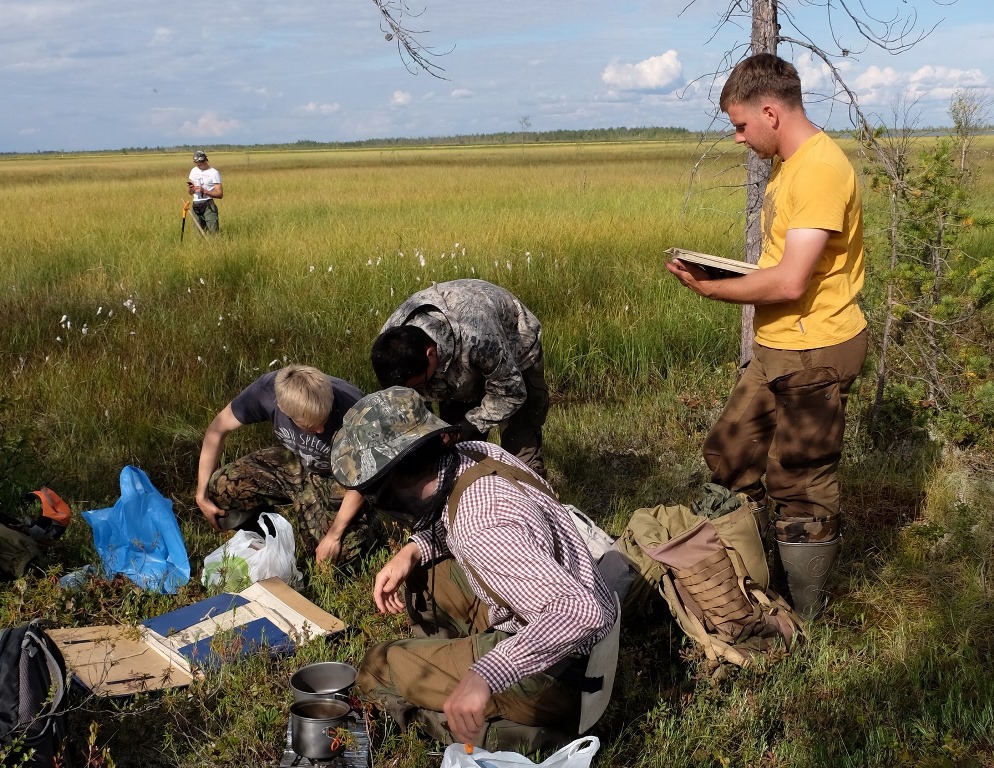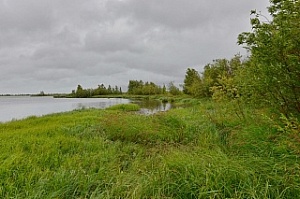Tomsk State University researchers are working in the Arctic zone of the Russian Federation, which is faced with the rapid waterlogging of lakes. This phenomenon is usually found in areas with a warm climate, for example, it is often found in Belarus and in the taiga zone of the Russian plain. One of the possible reasons for this change in the ecosystem of the Arctic lakes may be global warming causing their basins to empty.
The staff of the TSU Bio-Geo-Clim Laboratory are studying the ecosystems of forest and wetland complexes in Western Siberia. In particular, they are exploring the khasyrey (drained lakes) - former lakes that could become green oases in the Arctic.
- During our expedition to the Purovsky Region of the Yamalo-Nenets Autonomous Okrug, we discovered several objects that we initially (when analyzing satellite images) had taken as khasyrey, but it turned out that these are lakes on the surface of which marshy ground (which looks like a green pillow of peat overgrown with mosses and sedge) was formed, - says Sergey Loyko, the project manager, senior researcher at the Bio-Geo-Clim Laboratory. - We have never found similar phenomena in the Arctic zone. And there is no mention of the current formation of alloys in harsh continental conditions in literary and scientific sources.
According to the scientist, marshy ground is often found in the marshy plains of a warm climate on the surface of nutrient-rich water bodies. Over time, the vegetable pillows become compact and become a sustainable island. As their thickness increases, the lower layers die off and fall to the bottom, turning into peat.

The reason for the formation of such marshy floats at the TSU Khanymei research station area is a partial decrease in the water level of the lake, which is associated with climate warming. Permafrost that was an obstacle to the drainage of lakes is leaving. Due to partial drainage, part of the lake bottom is exposed, settling herbs pump out nutrients from bottom sediments, and then these substances are washed out and flow into the remaining body of water. This activates the formation of an alloy.
- Many waterfowl were noted on the overgrown reservoirs, - says Sergey Loyko. - Most likely, this is because bogging lakes have a lot of algae, which serves as forage for birds. The ecological capacity of such reservoirs increases. It is possible that the ichthyofauna here is also distinguished by high numbers and great diversity. It would be very interesting to work on these lakes to find out the causes of such natural transformations and understand what they will lead to in the future.
Recently, various scientific groups have noted the trend of greening of the Arctic. This is also being observed by the indigenous peoples of the Yamalo-Nenets Autonomous Okrug, who in the last decade have seen a noticeable change in biodiversity - the emergence of grass and new species of animals and insects.

